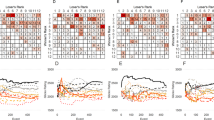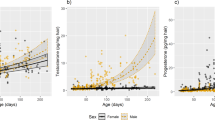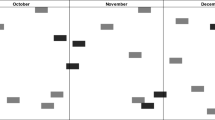Abstract
OBJECTIVE: To investigate the effects of hormone replacement therapy (HRT) and social stress on body fat distribution in an animal model of women’s health, the female cynomolgus macaque (Macaca fascicularis).
DESIGN/SUBJECTS: Adult female cynomolgus monkeys were ovariectomized and fed an atherogenic diet for two years while housed in social groups of 3–8 monkeys each. Animals were then fed a lipid-lowering diet and randomized into four experimental groups: a baseline group which was necropsied immediately and not included in the study reported here, 26 females fed diet only (CONTROL), 22 females fed diet plus conjugated equine estrogens (CEE), and 21 females fed the diet plus CEE and medroxyprogesterone acetate (CEE+MPA). Treatment lasted 30 months.
MEASUREMENTS: During the last nine months of treatment, social status was determined three times at three month intervals. At the end of the study, whole body obesity and fat distribution patterns were determined using anthropometry and computerized tomography (CT).
RESULTS: The addition of a progestin to the estrogen replacement regimen administered to surgically postmenopausal monkeys, increased all anthropometric and CT measures of obesity except intra-abdominal fat. HRT had no effect on patterns of fat distribution. Socially-dominant, ovariectomized females were more obese than subordinates using both anthropometric and CT measurements of whole body obesity. Dominant females were more likely to have their fat deposited centrally as measured anthropometrically. However, CT measures revealed a trend for dominants to preferentially deposit fat in the subcutaneous abdominal depot in contrast to subordinates who deposited fat in the intra-abdominal depot.
CONCLUSIONS: The results of this study suggest that progestins, when administered in combination with estrogens, may increase fat deposition, particularly in subcutaneous depots. In addition, the social stress experienced by subordinate monkeys, may have mild effects on fat deposition patterns, even after removal of ovarian function as a factor. These observations may have implications for treatment recommendations in postmenopausal women. Lastly, CT may measure different characteristics of fat distribution than skinfolds and circumferences.
This is a preview of subscription content, access via your institution
Access options
Subscribe to this journal
Receive 12 print issues and online access
$259.00 per year
only $21.58 per issue
Buy this article
- Purchase on Springer Link
- Instant access to full article PDF
Prices may be subject to local taxes which are calculated during checkout
Similar content being viewed by others
Author information
Authors and Affiliations
Corresponding author
Rights and permissions
About this article
Cite this article
Wallace, J., Shively, C. & Clarkson, T. Effects of hormone replacement therapy and social stress on body fat distribution in surgically postmenopausal monkeys. Int J Obes 23, 518–527 (1999). https://doi.org/10.1038/sj.ijo.0800865
Published:
Issue Date:
DOI: https://doi.org/10.1038/sj.ijo.0800865
Keywords
This article is cited by
-
RETRACTED ARTICLE: Luffa cylindrica: a promising herbal treatment in progesterone induced obesity in mice
Journal of Diabetes & Metabolic Disorders (2021)
-
Social Stress, Visceral Obesity, and Coronary Artery Atherosclerosis in Female Primates
Obesity (2009)
-
Les 10es Entretiens de nutrition, institut Pasteur de Lille L’obésité, une maladie nutritionnelle ?
Obésité (2008)
-
Education, psychosocial resources, and metabolic syndrome variables in Latinas
Annals of Behavioral Medicine (2007)



